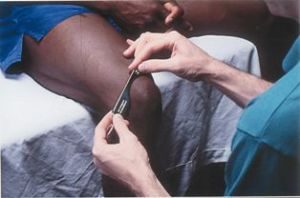Foam Rolling Recovery in Just 10 Minutes

Foam Rolling
Chances are pretty good that you already know many benefits of foam rolling recovery after a run or workout. Runner’s World and other health and wellness publications have highlighted the benefits of foam rolling. You can also find many articles on what type of foam roller might best serve your purposes. What you might not be aware of is how much time to spend on foam rolling recovery after a workout. There are between 650 and 700 skeletal muscles in the body according to most sources (not counting cardiac muscle or smooth muscle of the digestive system)! Should you spend hours hitting all those muscles? Ok, so that’s just absurd! Should you only hit the 2 or 3 muscle groups that are sore or your typical “problem areas”? I hope this post sheds some clarity on the issue.
Foam Rolling Recovery
Are you looking to hone your foam rolling skills? Read about common foam rolling mistakes and how to fix them. Likewise, if you’re looking how to most effectively hit the major muscle groups, this post is for you. We designed our routine to share a few unique ways of hitting common muscle groups of the lower extremity.
Many runners do not involve movement in their foam rolling recovery sessions. The video below highlights several ways to incorporate movement, pinning one layer of muscle and gliding another past it. Additionally, Dr. Martin shows a few alternative ways to more effectively address the muscle group being targeted.
If you have sore muscles from a run or strength-training session, this foam rolling recovery protocol will give your muscles the relief they need. The Elite Sport & Spine routine includes the most effective ways to mobilize and loosen tight calves, hamstrings, quads, IT bands, and adductor/groin muscles. Even if you feel you never have time to fully stretch or loosen up after a run or workout, this 10-minute recovery routine provides you the resource you need to keep yourself moving and your muscles happy.
Elite Sport & Spine Foam Rolling Protocol
Here is a quick review of some of the regions of the lower body that we foam roll. Use the foam roller as part of your warm up and/or part of your post workout recovery. Again, we want to use the foam roller as a way to improve movement, like hip hinging or squatting. 🏋🏻♂️🏋🏽♀️
Posted by Elite Sport & Spine on Thursday, February 7, 2019
- Glutes. Sit on the foam rolling in a “Figure 4” position with your weight shifted toward one side (0:05). Start by rolling back and forth. Then rotate the foam roller and roll side-to-side to better address the deep hip external rotators (0:12).
- Hamstrings. Cross one leg over the other to add more compression into the foam roller (0:20). Roll forward and backward. Additionally, rotate your hips side-to-side to get a cross-friction massage (0:30).
- Calves. Begin in a similar position to the hamstrings with one leg crossed over the other (0:35). Roll forward and backward. Additionally, plantar flex and dorsiflex your ankle to achieve a deeper pressure.
- Adductor/groin. From a crawling position, move one leg so the inner thigh is contacting the foam roller (0:43). Move your hips side-to-side to roll the inner thigh over the foam roller. You can also bend and straighten your knee to glide the inner hamstrings and adductors past each other.
- Quadriceps. From a front plank position, with the foam roller under the front of your thigh, roll forward and backward (0:52). Another modification is to roll with the knee bent or slowly bend and straighten your knee as you continue to roll (0:58).
- IT Band. From a side plank position, with the foam roller under your outer thigh, roll forward and backward. Alternatively, bend and straighten your knee while staying stationary or continuing to roll. This helps to pin down the IT Band and glide the contracting and relaxing lateral quad muscle (vastus lateralis) past it.
- Hip Flexors. From a front plank position, place the edge of the foam roller at the front of your hip. Roll forward and backward to address the sartorius, rectus femoris, psoas, and illiacus muscles that make up the hip flexor group.
Chiropractic for Runners
Spend about 30 seconds on each muscle group, then switch legs. This protocol addresses about 50 of those 700 skeletal muscles. This protocol may be a little different for many of you. It will likely take some practice and might be a little longer than 10 minutes at first. However, once you get used to performing some of these movements you will easily be able to accomplish the routine in 10 minutes.
 If you’re struggling with a nagging running injury or foam rolling just isn’t quite cutting it, it’s time to schedule an appointment and get a full evaluation or Running Assessment. Our sports chiropractors offer Graston Technique and other instrument assisted soft tissue mobilizations (IASTM), in addition to manual myofascial release, cupping, and running-specific corrective exercises to get you back and keep you running. You can schedule online to set up your appointment today, or if you rather, call (262) 373-9168 and Beth or Diane will be happy to get you scheduled!
If you’re struggling with a nagging running injury or foam rolling just isn’t quite cutting it, it’s time to schedule an appointment and get a full evaluation or Running Assessment. Our sports chiropractors offer Graston Technique and other instrument assisted soft tissue mobilizations (IASTM), in addition to manual myofascial release, cupping, and running-specific corrective exercises to get you back and keep you running. You can schedule online to set up your appointment today, or if you rather, call (262) 373-9168 and Beth or Diane will be happy to get you scheduled!
 262-373-9168
262-373-9168



